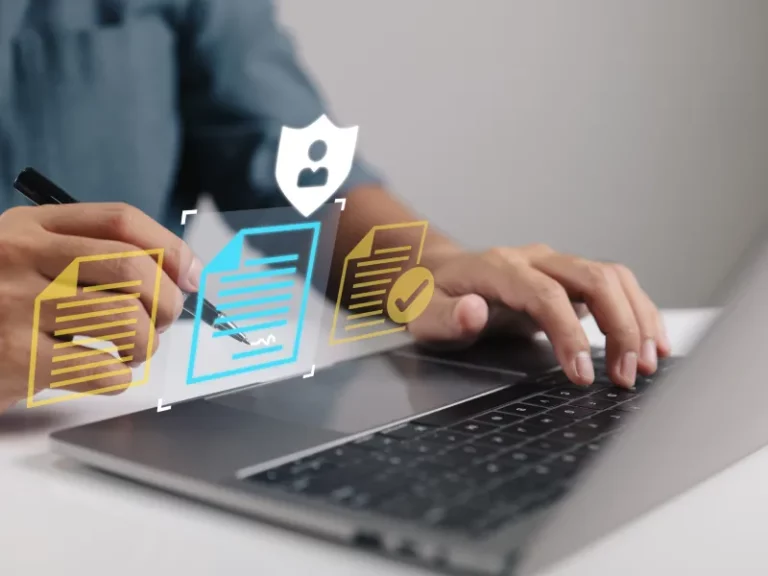Hybrid work is no longer a temporary trend; it is the new business model. Employees now switch between office desktops, home laptops, personal devices, and cloud services daily. While this flexibility boosts productivity, it also creates significant security challenges. One of the most pressing is Hybrid Work File Security: how to protect sensitive files when they’re constantly moving between different locations, devices, and networks.
In a hybrid environment, traditional security perimeters disappear. Files are emailed, shared over collaboration tools, stored in cloud drives, and sometimes accessed on unsecured personal devices. Without the right security measures, confidential data can be exposed, lost, or stolen, whether through accidental sharing or targeted attacks. This is why organizations need a file security strategy that travels with the data, not one that stops at the office door.
The Risks of Hybrid Work File Sharing
Hybrid work introduces new risks to file security because data moves in unpredictable ways. Employees often switch between corporate systems and personal devices, sometimes bypassing IT controls for convenience. This creates blind spots where sensitive files can be leaked, misused, or lost without triggering traditional security alerts. These risks require a shift from perimeter-based security to data-centric protections that follow the file everywhere, which are:
- Unsecured File Transfers: Sending files via personal email, public file-sharing apps, or unsecured messaging platforms.
- Cloud Storage Misconfigurations: Uploading sensitive documents to cloud drives with weak access controls or no encryption.
- Shadow IT Usage: Using unapproved apps or tools to collaborate on documents without IT visibility.
- Endpoint Vulnerabilities: Accessing sensitive files from personal devices that lack security patches or antivirus protection.
- Data Leakage from Remote Work: Employees may accidentally share confidential information with the wrong recipients or store it in unprotected folders.
Why File-Centric Security Is the Core of Hybrid Work Protection
In a hybrid work environment, security can no longer revolve around devices, offices, or even cloud platforms; it must revolve around the file itself. Sensitive documents move across personal devices, SaaS apps, unsecured home networks, and third-party collaborations daily. This makes file security the frontline of data protection.
Adopting a file-centric security mindset means treating each file as an independent asset with its security controls, regardless of where it’s stored or accessed. This shift is critical because the file journey no longer follows predictable paths: it may be shared, copied, or viewed across dozens of systems and environments. Here are the key pillars of a file-centric security approach for hybrid work:
- Persistent File Encryption: Ensure that encryption travels with the file, keeping it secure even outside corporate boundaries.
- Granular Access Control: Define who can access, edit, or forward specific files based on role, location, or device trust level.
- Data Classification and Tagging: Apply automated labels that dictate how different categories of files are protected or shared.
- Digital Rights Enforcement: Prevent unauthorized actions like printing, copying, or screenshotting sensitive documents.
- Secure Cloud Collaboration: Monitor how files are shared in platforms like Microsoft 365 or Google Drive and prevent misconfigurations.
- Endpoint and Remote Work Safeguards: Require endpoint protection compliance before allowing access to sensitive files.
- Ongoing User Awareness: Build a culture where employees understand that file security is part of their daily responsibility.
Real-World Examples of Hybrid Work File Security in Action
Many organizations are already adapting to the reality of Hybrid Work File Security. For example, financial teams working from home use encrypted spreadsheets and enforce access policies that prevent unauthorized sharing. Legal departments deploy document control policies that limit how case files are opened, viewed, or stored outside secure environments. Healthcare providers secure patient records accessed via telemedicine platforms with strong data loss prevention controls.
Even in creative industries, design teams use protected file formats and watermarking to safeguard intellectual property shared with external partners. These use cases show that file security must be flexible enough to support hybrid work while staying strict enough to prevent leaks.
Final Thought
The hybrid work model is here to stay, and with it comes new file security challenges that businesses can’t ignore. Protecting sensitive data now means securing the file itself, not just the device or network it’s on. Without the right safeguards, files can quickly become the weakest link in your security strategy, especially in remote and cloud-based workflows.
At Terrabyte, we help businesses across Southeast Asia build Hybrid Work File Security strategies that balance collaboration with control. Whether managing remote teams, cloud collaboration, or cross-border file sharing, Terrabyte can support your journey to safer hybrid operations.
Contact Terrabyte today to protect your files, wherever your teams work.


